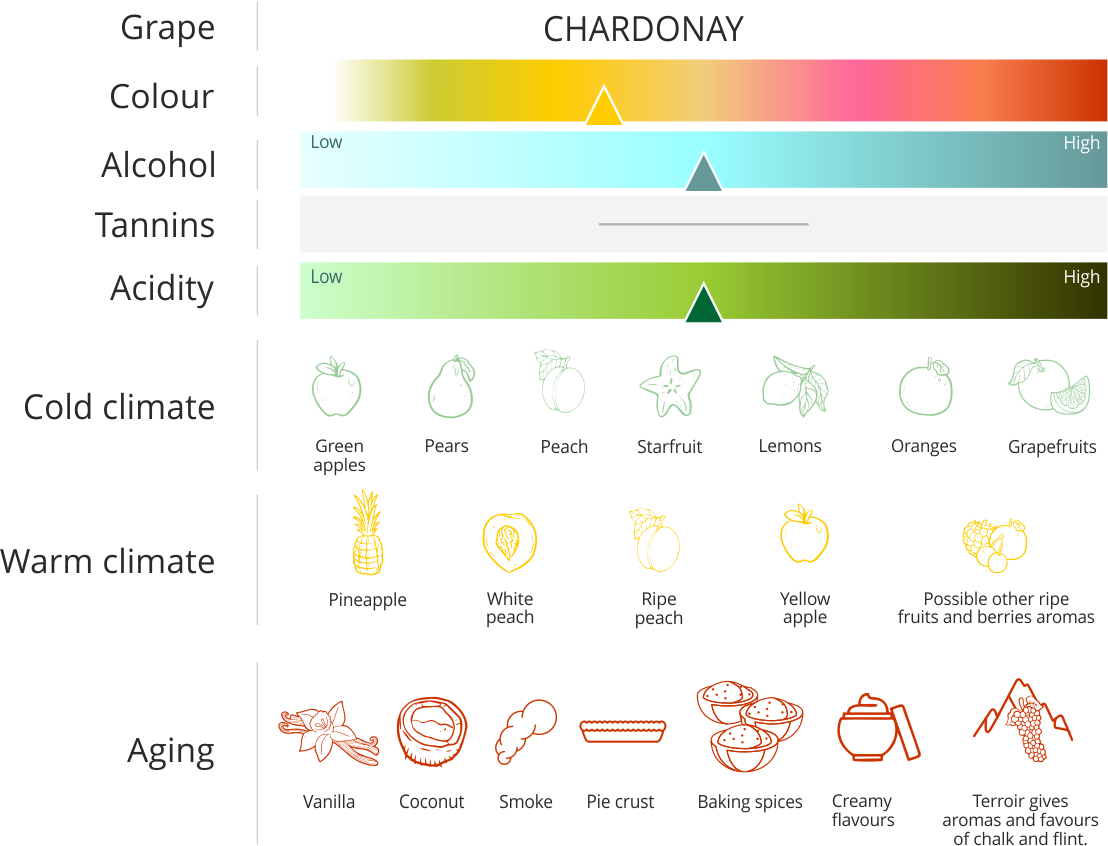CHARDONNAY is one of the most popular wine grape varieties in the world. It’s homeland is Burgundy, where Chardonnay was for long the only wine characterized as finest Burgundy white. Grapes worldwide popularity is not only due to its flavour features, but also because of its physiological characteristics. It grows well in different terroirs and climates. Chardonnay’s ability to obtain different terroir characteristics and wide aging possibilities are the main reasons of its popularity.
Colder climate CHARDONNAY has unripe fruit flavors, such as green apple, melon, lime or white peach and higher acidity level. Warmer climate grape has aromatic features of ripe mandarins, peaches, pineapple or grapefruits and lower than average acidity level. Winemakers control harvest time due to saving more acidity in the grapes (acidity lowers when grapes are too ripe in a warm climate). Malolactic fermentation gives distinctive buttery aromas while maturation in oak barrels contributes notes of vanilla, smoke and hints of sweet spices such as clove and cinnamon. Most aromatic complexity comes from terroir and winemaking techniques, used to produce the wine. This is why Chardonnay has become known as the “winemaker’s wine”.
France produces most CHARDONNAY in Europe, while Italy and Spain follows. Chardonnay is a crucial ingredient in most of the sparkling wines, as well as Champagne.
Other white wine grapes




